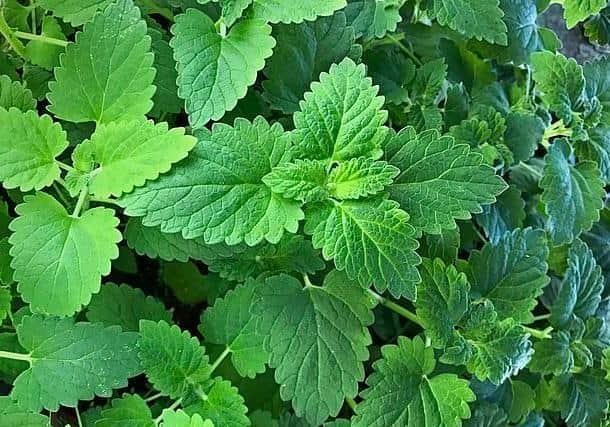Scientists reveal origins of plant that sends cats into a frenzy


A team of international scientists, including academics from the University of York, have produced research about how catmint can produce complex molecules.
Findings from the research could help scientists to create medicines, such as anti-cancer drugs derived from plants.


Advertisement
Hide AdAdvertisement
Hide AdCatmint, also known as catnip, is well known for its intoxicating effect on cats. The odour responsible for the cats’ strange behaviour is nepetalactone, a volatile iridoid produced by catmint.
Iridoids are substances some plants use to defend themselves against herbivores or pathogens.
Researchers, including Dr Benjamin Lichman from the University of York, sequenced the genome of catmint to understand how it makes nepetalactone and how it evolved to make this unique molecule.
Dr Lichman, from the department of biology, who has been working on the project for three years, said: "We would like to find out how evolution works - how different plants have evolved to make different chemicals."


Advertisement
Hide AdAdvertisement
Hide AdHe added: "Catnip is providing a really nice case study for us to investigate."
Dr Lichman said the team discovered a number of unusual enzymes which generate nepetalactone. These enzymes are not found in any related plant species and have evolved uniquely in catmint.
He said: "When we first saw the genome sequence of catmint we realized that the important genes that we hypothesized were active in the formation of nepetalactone were next to each other in the genome.
"This allowed us to solve the problem more easily."
Understanding how plants make complex molecules like nepetalactone could also lead to the ability to create medicines, such as anti-cancer drugs derived from plants, more efficiently and quickly than scientists are currently able to harvest them from nature.
Advertisement
Hide AdAdvertisement
Hide AdCurrently there are scientists working on anti-cancer drugs derived from plants in Denmark and the US.
"They take the enzymes from plants and they put them into yeast to try and make these anti-cancer drugs," Dr Lichman said.
"Some of the enzymes from catnip could be used within those systems."
The research was led by Professor Sarah O’Connor, from the department of natural product biosynthesis at the Max Planck Institute for chemical ecology in Germany.
Advertisement
Hide AdAdvertisement
Hide AdProfessor O’Connor said: "Plants are constantly evolving new chemistry. With our research, we would like to get snapshots of this evolution in action."
Join our new coronavirus Facebook group for the latest confirmed news and advice as soon as we get it._________________________________
Editor’s note: first and foremost - and rarely have I written down these words with more sincerity - I hope this finds you well.
Almost certainly you are here because you value the quality and the integrity of the journalism produced by The Yorkshire Post’s journalists - almost all of which live alongside you in Yorkshire, spending the wages they earn with Yorkshire businesses - who last year took this title to the industry watchdog’s Most Trusted Newspaper in Britain accolade.
Advertisement
Hide AdAdvertisement
Hide AdAnd that is why I must make an urgent request of you: as advertising revenue declines, your support becomes evermore crucial to the maintenance of the journalistic standards expected of The Yorkshire Post. If you can, safely, please buy a paper or take up a subscription. We want to continue to make you proud of Yorkshire’s National Newspaper but we are going to need your help.
Postal subscription copies can be ordered by calling 0330 4030066 or by emailing [email protected]. Vouchers, to be exchanged at retail sales outlets - our newsagents need you, too - can be subscribed to by contacting subscriptions on 0330 1235950 or by visiting www.localsubsplus.co.uk where you should select The Yorkshire Post from the list of titles available.
If you want to help right now, download our tablet app from the App / Play Stores. Every contribution you make helps to provide this county with the best regional journalism in the country.
Sincerely. Thank you.
James Mitchinson
Comment Guidelines
National World encourages reader discussion on our stories. User feedback, insights and back-and-forth exchanges add a rich layer of context to reporting. Please review our Community Guidelines before commenting.